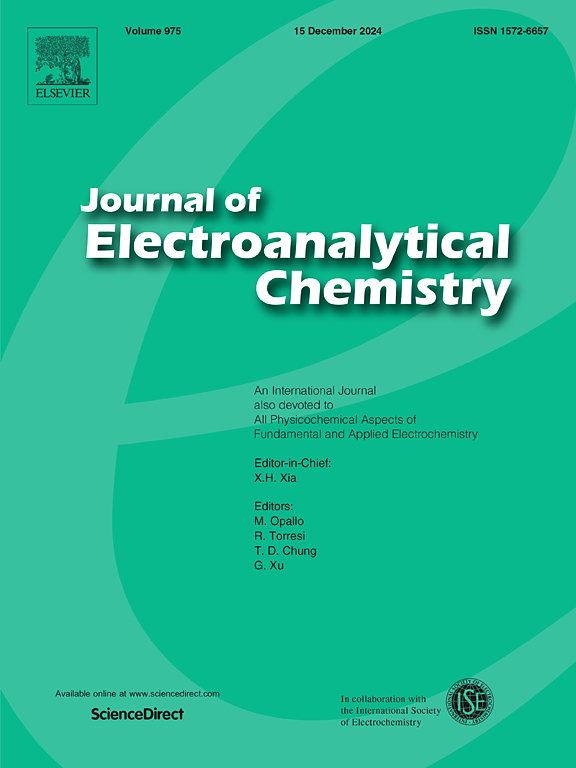Enhanced photoelectrocatalytic performance of N-acetylaminobenzoic acid-doped PDMS composite photoelectrodes for oxygen evolution reaction in water splitting
IF 4.1
3区 化学
Q1 CHEMISTRY, ANALYTICAL
引用次数: 0
Abstract
In the field of photoelectrocatalysis, polydimethylsiloxane (PDMS) matrices are commonly used as carriers or substrates for constructing composite photoelectrodes. In this study, a PDMS-based composite doped with N-acetylaminobenzoic acid (NAA), referred to as PDMS-NAA, was developed for photoelectrochemical hydrogen reactions. Photoelectrochemical analysis results indicate that NAA doping significantly enhances the photoelectrocatalytic activity; the photocurrent density of PDMS-NAA (0.43 μA/cm2) is 3.09 times higher than that of pure PDMS (0.14 μA/cm2). Additionally, the contact layers of PDMS and NAA were modeled, and structural optimizations, as well as energy calculations, were performed using density functional theory (DFT). The computational results demonstrate excellent compatibility between PDMS and NAA, facilitating enhanced electron cloud overlap and efficient charge conduction. These findings highlight the potential of PDMS-NAA as a high-performance, flexible photoelectrocatalyst and provide new strategies for optimizing composite materials in renewable energy applications.
n -乙酰氨基苯甲酸掺杂PDMS复合光电极在水裂解析氧反应中的光电催化性能
在光电催化领域,聚二甲基硅氧烷(PDMS)基体常被用作构建复合光电极的载体或底物。本研究制备了一种掺杂n -乙酰氨基苯甲酸(NAA)的PDMS-NAA基复合材料,用于光电化学氢反应。光电化学分析结果表明,NAA的掺杂显著提高了材料的光电催化活性;PDMS- naa光电流密度为0.43 μA/cm2,是纯PDMS光电流密度(0.14 μA/cm2)的3.09倍。此外,建立了PDMS和NAA的接触层模型,并利用密度泛函理论(DFT)进行了结构优化和能量计算。计算结果表明,PDMS和NAA具有良好的相容性,有利于增强电子云重叠和有效的电荷传导。这些发现突出了PDMS-NAA作为高性能、柔性光电催化剂的潜力,并为优化复合材料在可再生能源中的应用提供了新的策略。
本文章由计算机程序翻译,如有差异,请以英文原文为准。
求助全文
约1分钟内获得全文
求助全文
来源期刊
CiteScore
7.80
自引率
6.70%
发文量
912
审稿时长
2.4 months
期刊介绍:
The Journal of Electroanalytical Chemistry is the foremost international journal devoted to the interdisciplinary subject of electrochemistry in all its aspects, theoretical as well as applied.
Electrochemistry is a wide ranging area that is in a state of continuous evolution. Rather than compiling a long list of topics covered by the Journal, the editors would like to draw particular attention to the key issues of novelty, topicality and quality. Papers should present new and interesting electrochemical science in a way that is accessible to the reader. The presentation and discussion should be at a level that is consistent with the international status of the Journal. Reports describing the application of well-established techniques to problems that are essentially technical will not be accepted. Similarly, papers that report observations but fail to provide adequate interpretation will be rejected by the Editors. Papers dealing with technical electrochemistry should be submitted to other specialist journals unless the authors can show that their work provides substantially new insights into electrochemical processes.

 求助内容:
求助内容: 应助结果提醒方式:
应助结果提醒方式:


